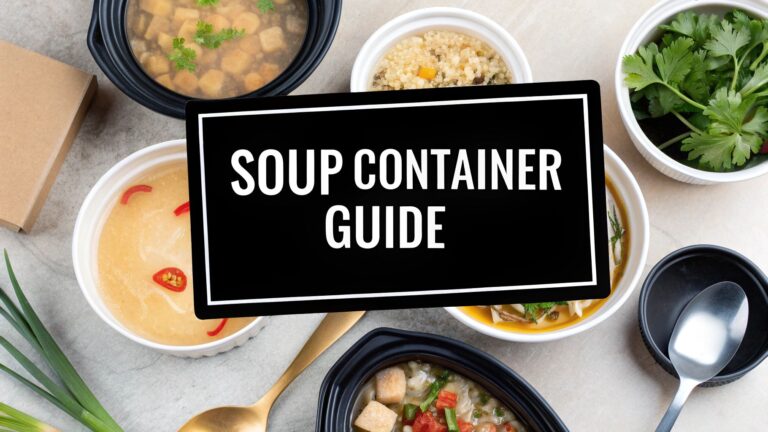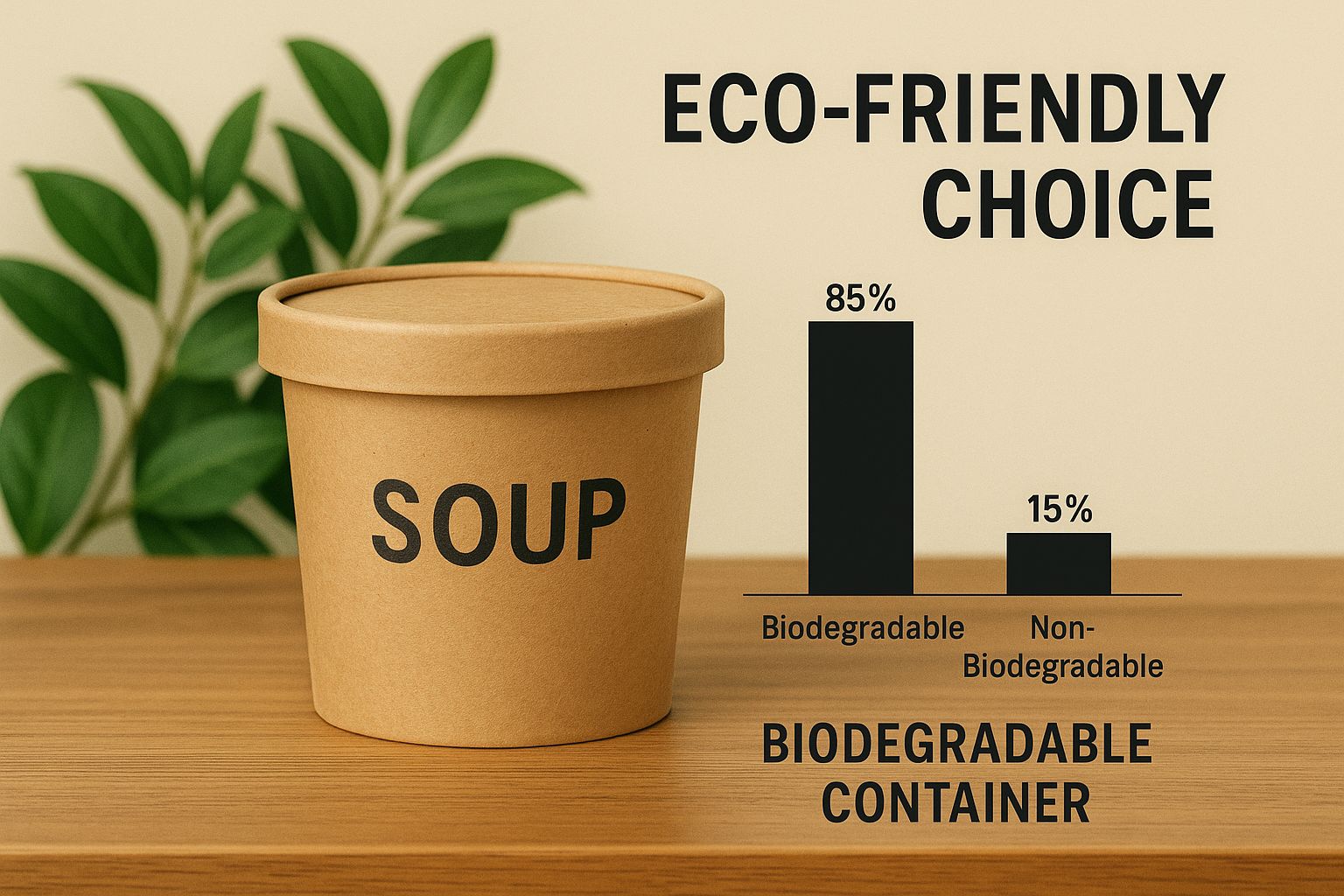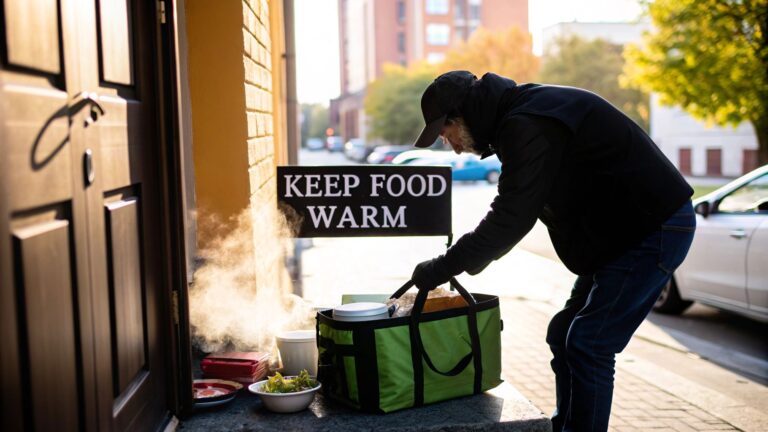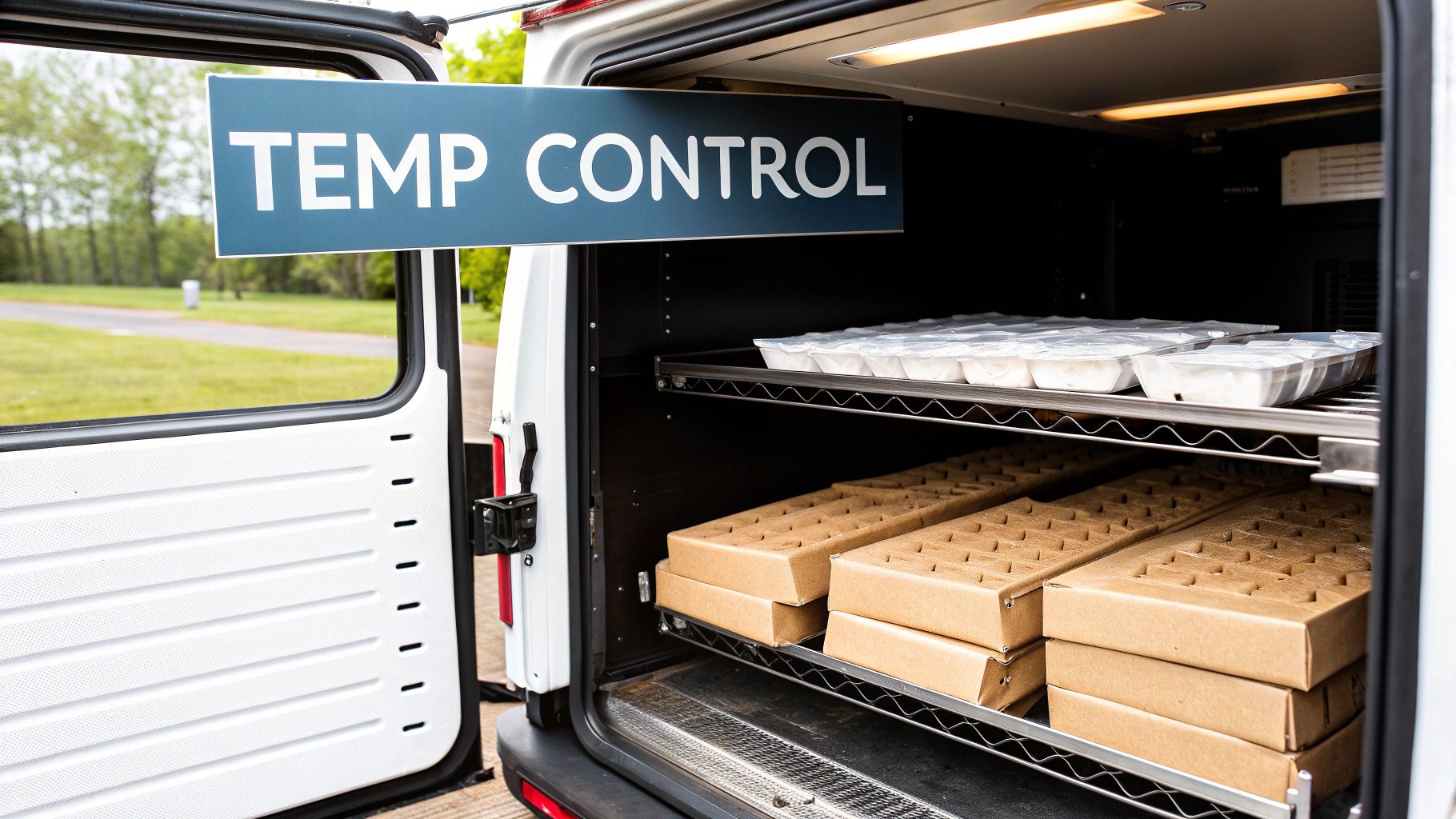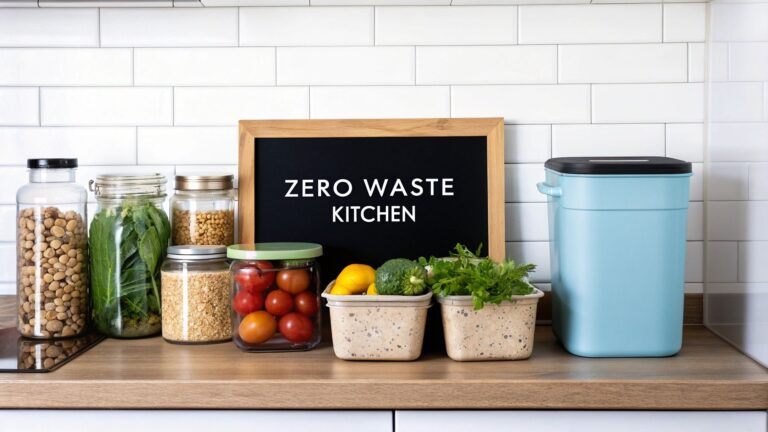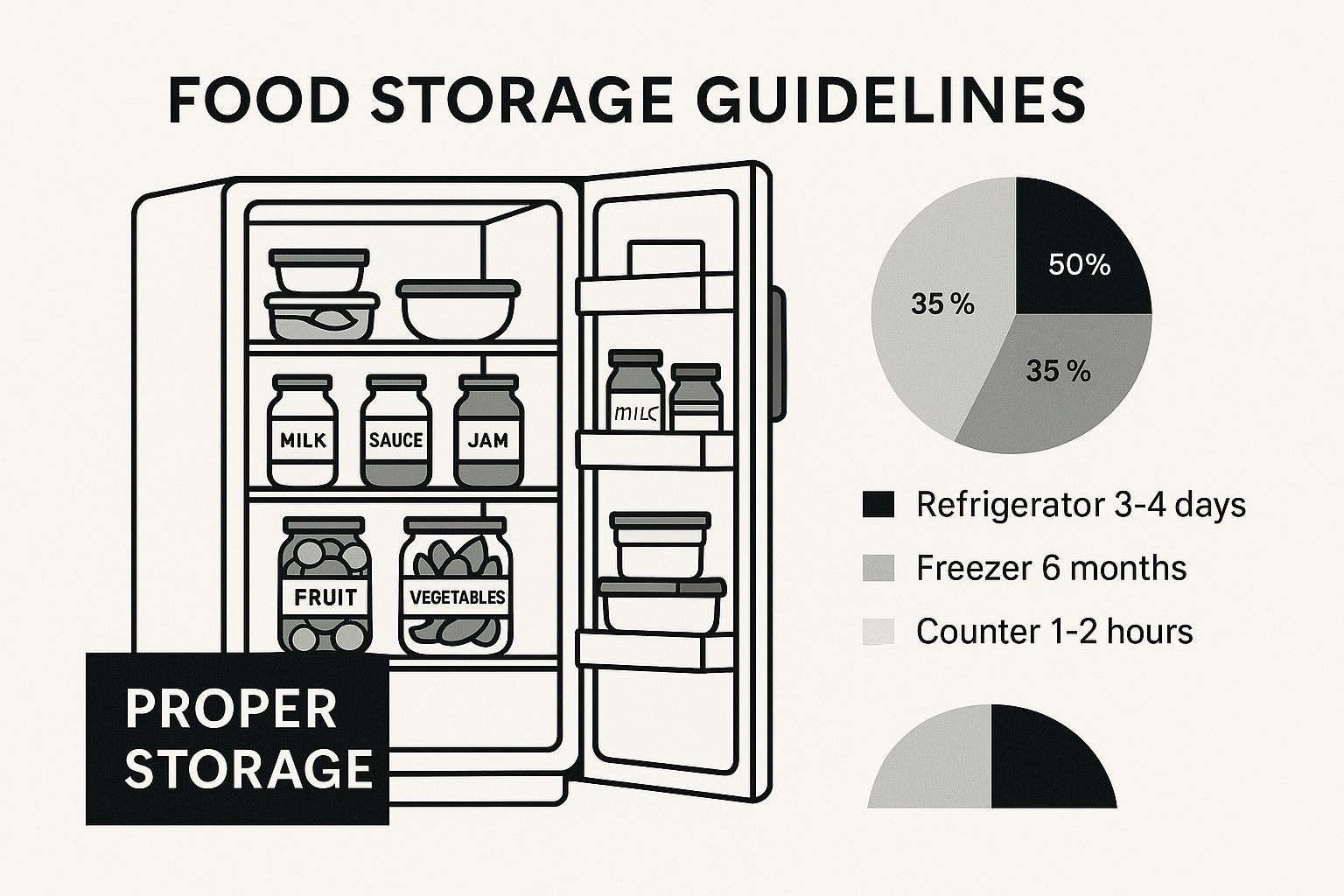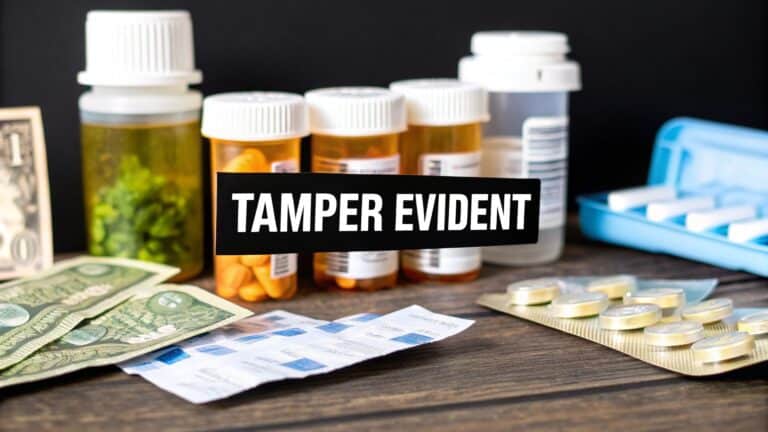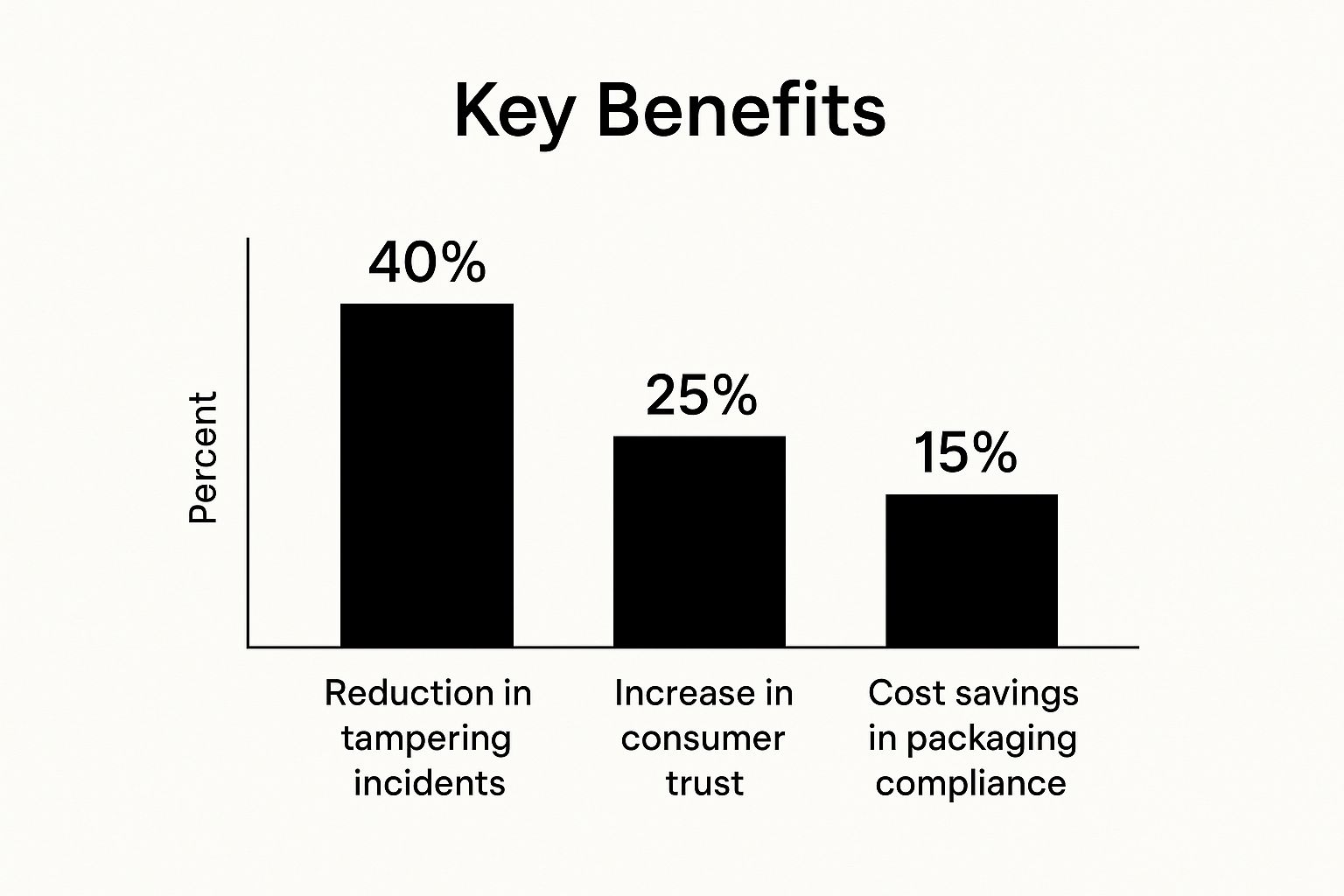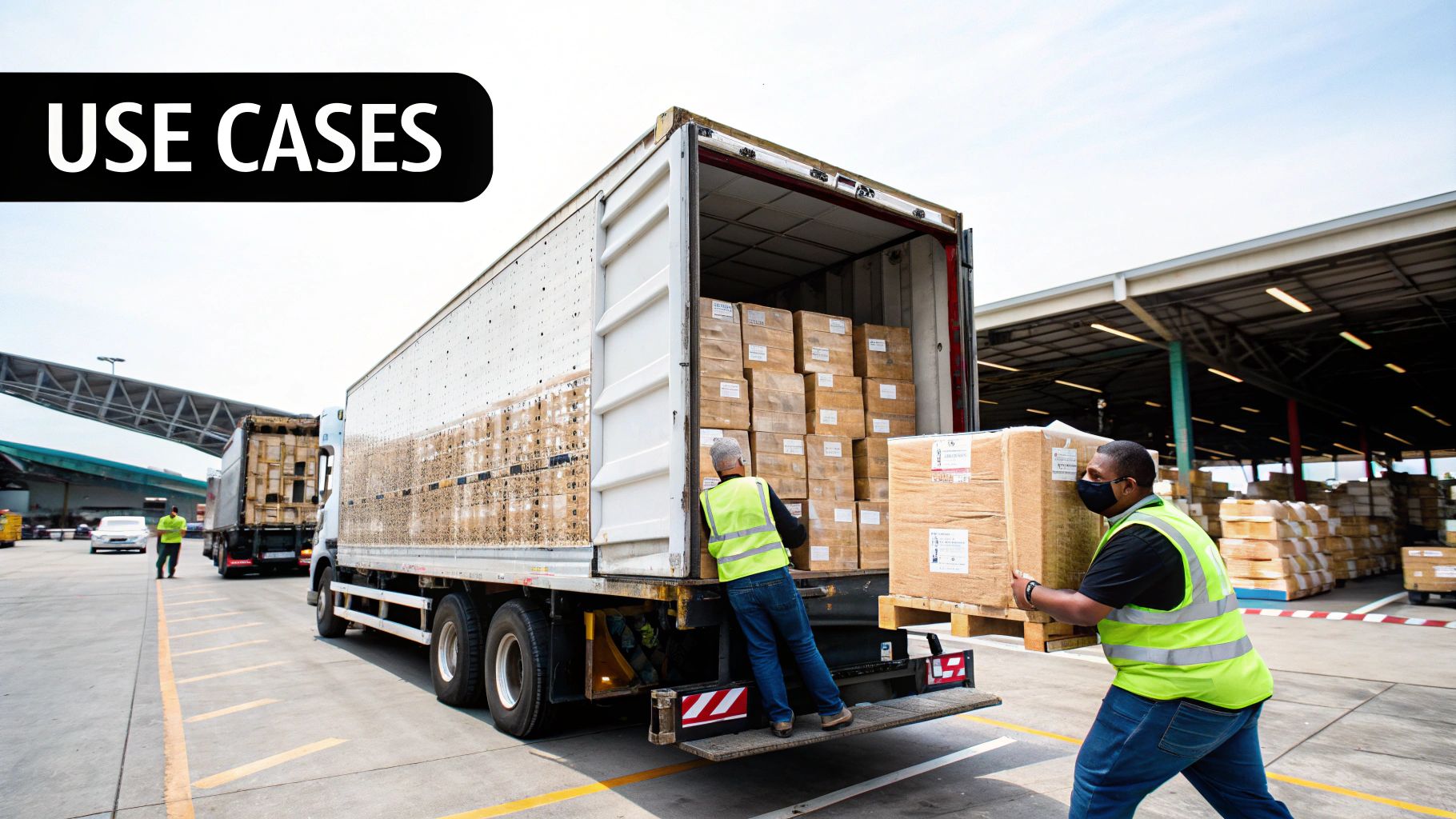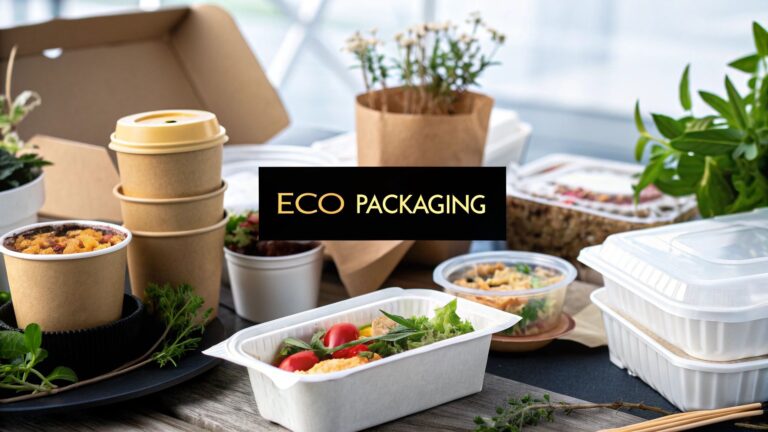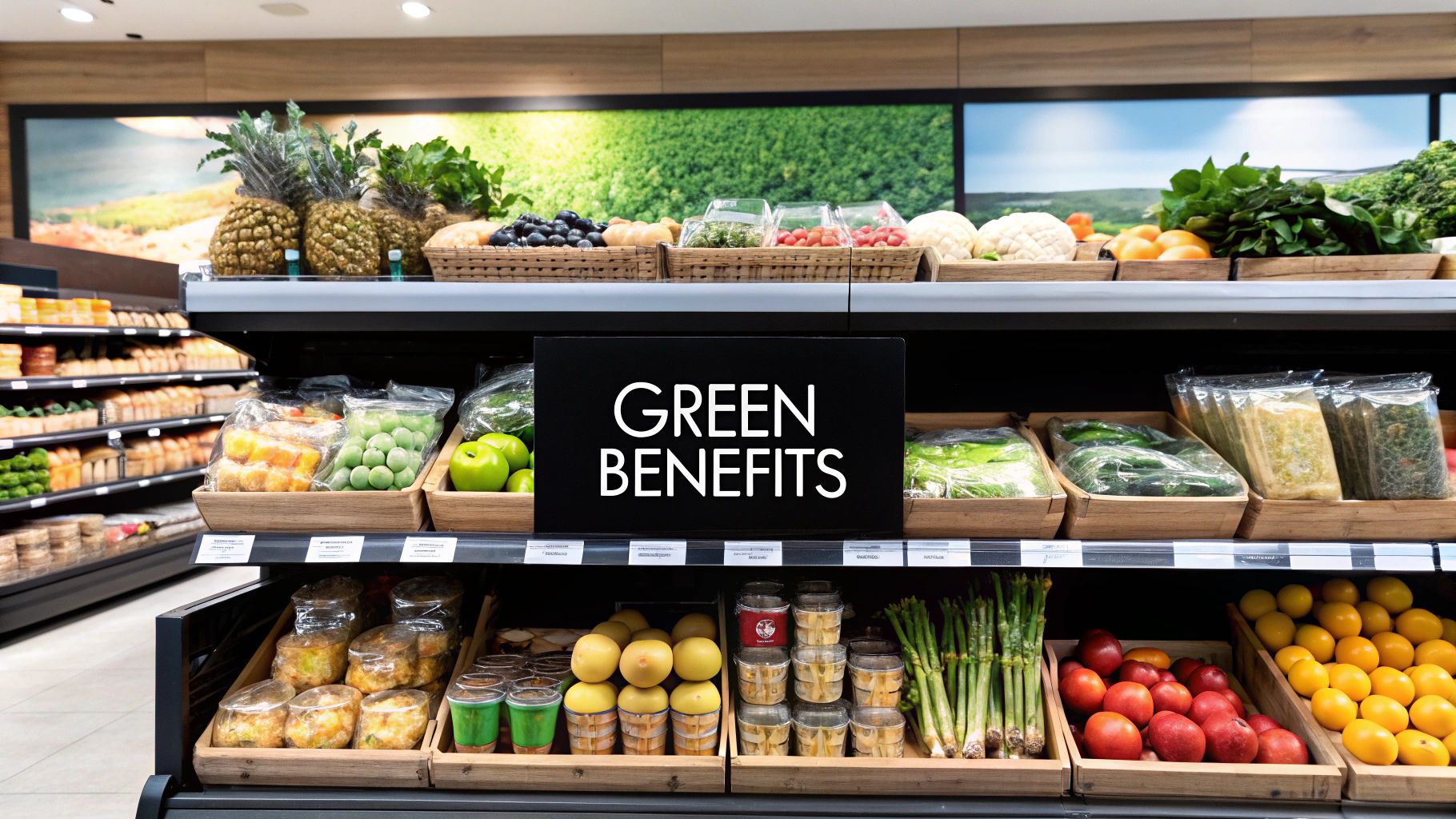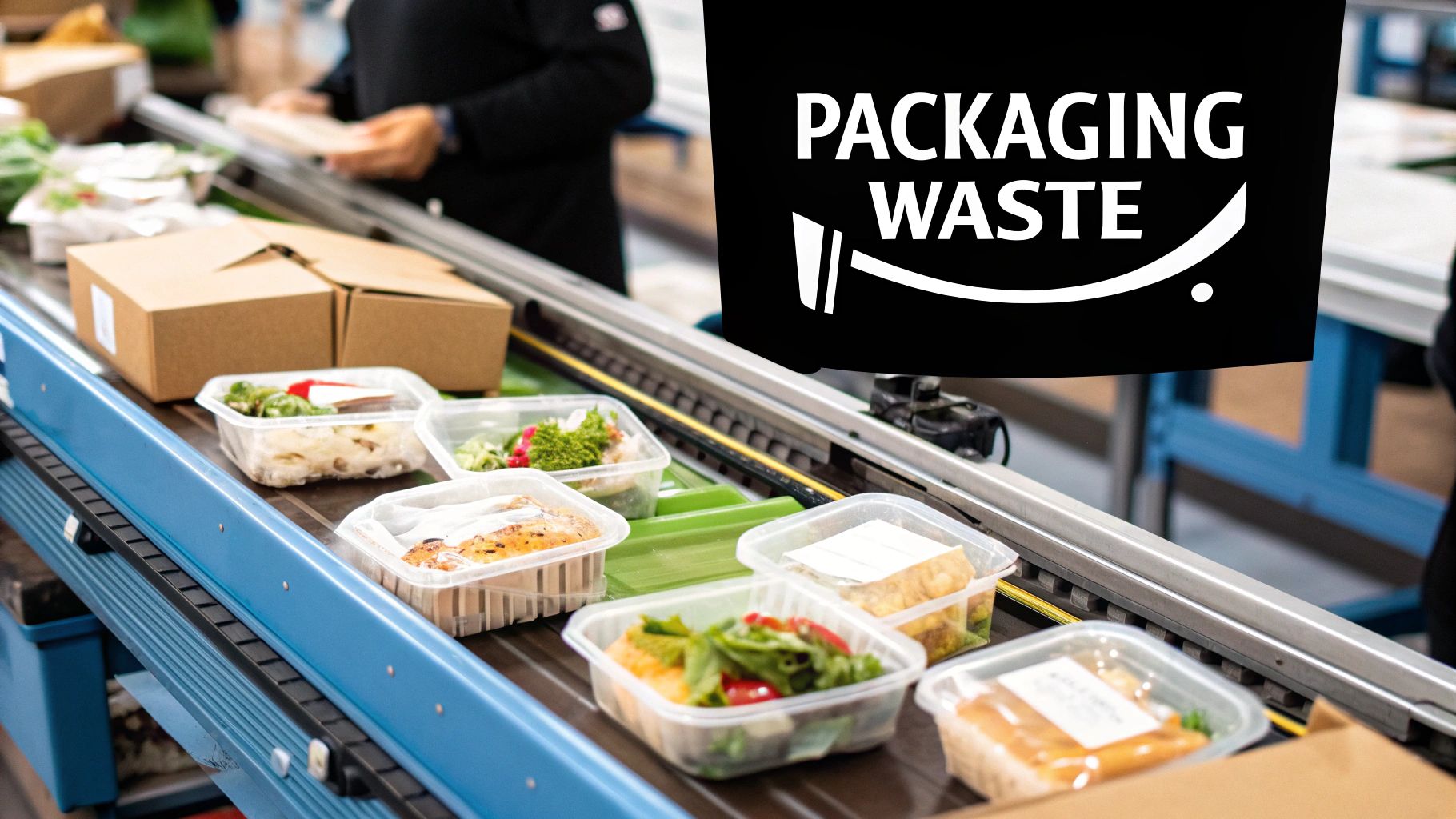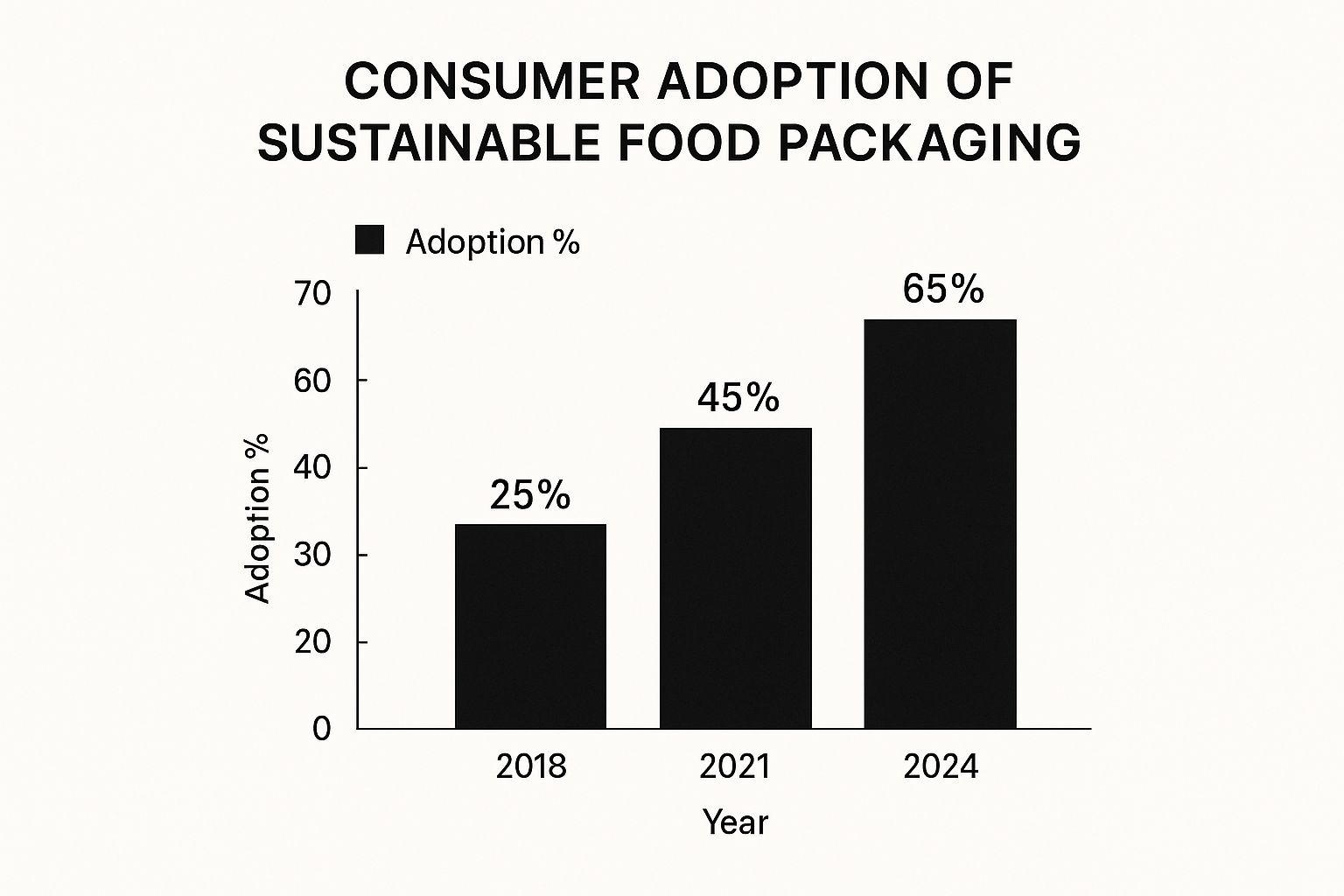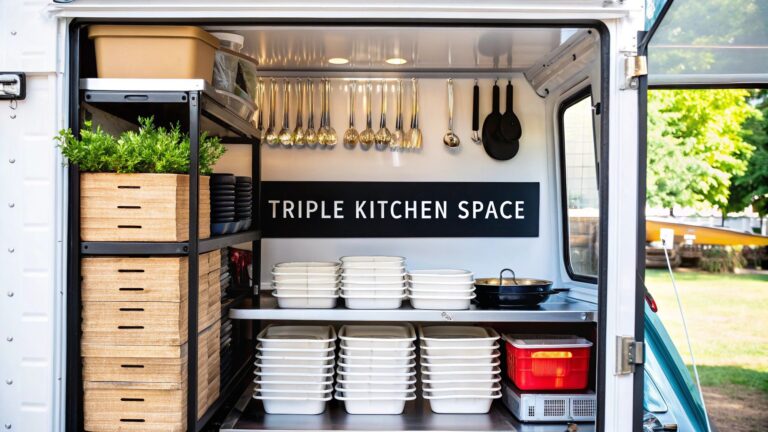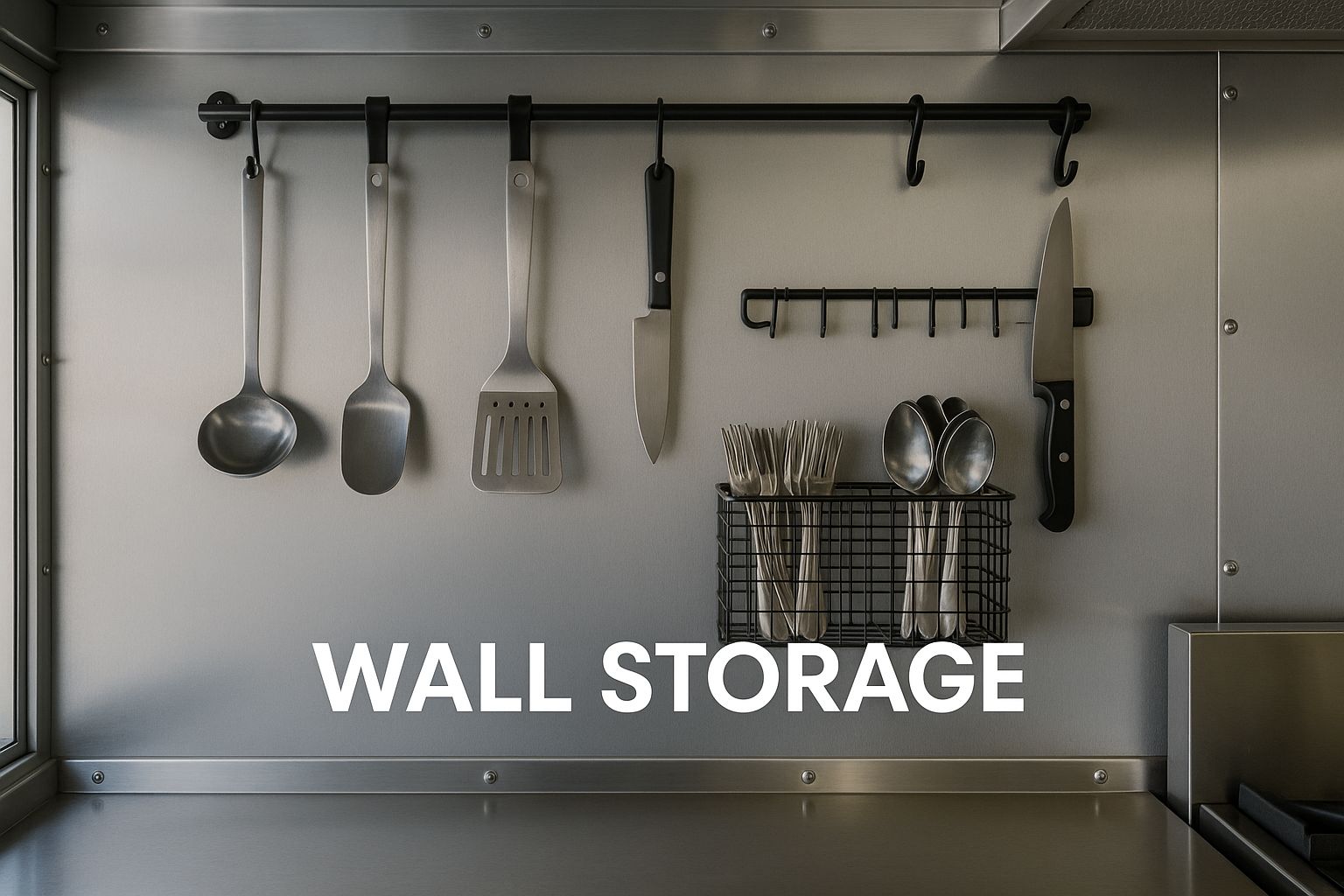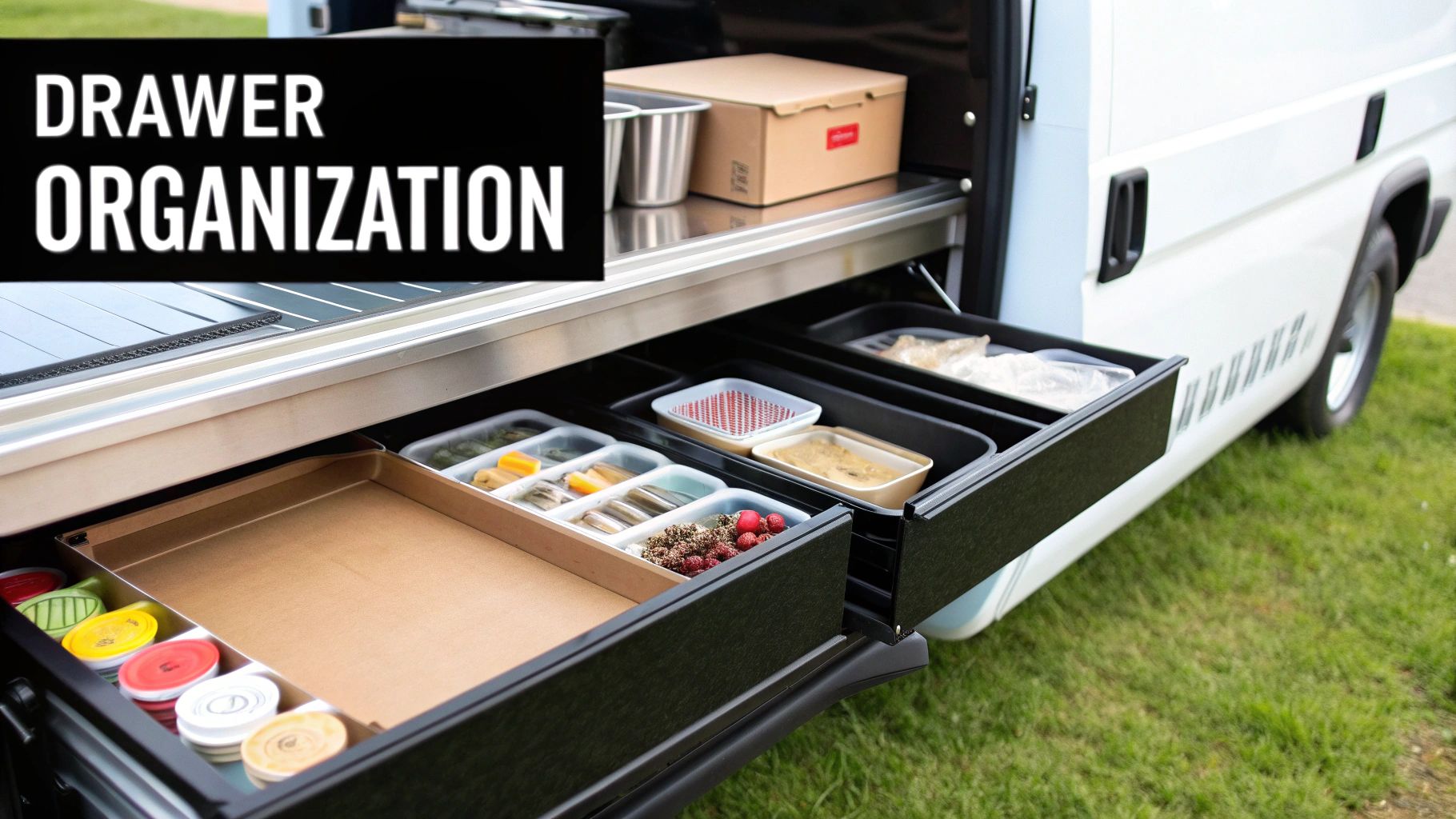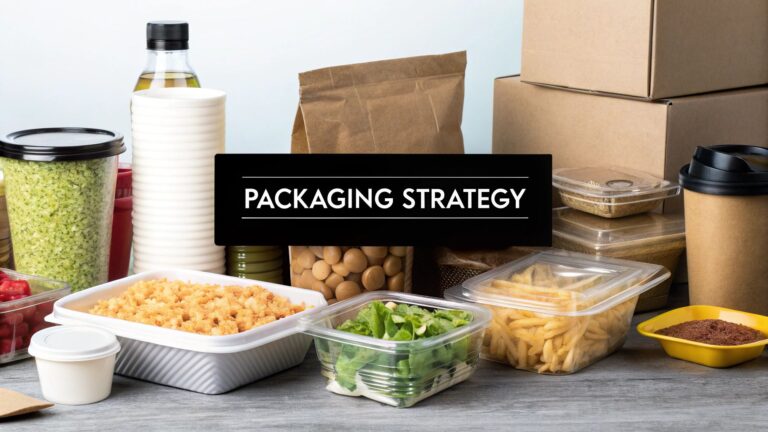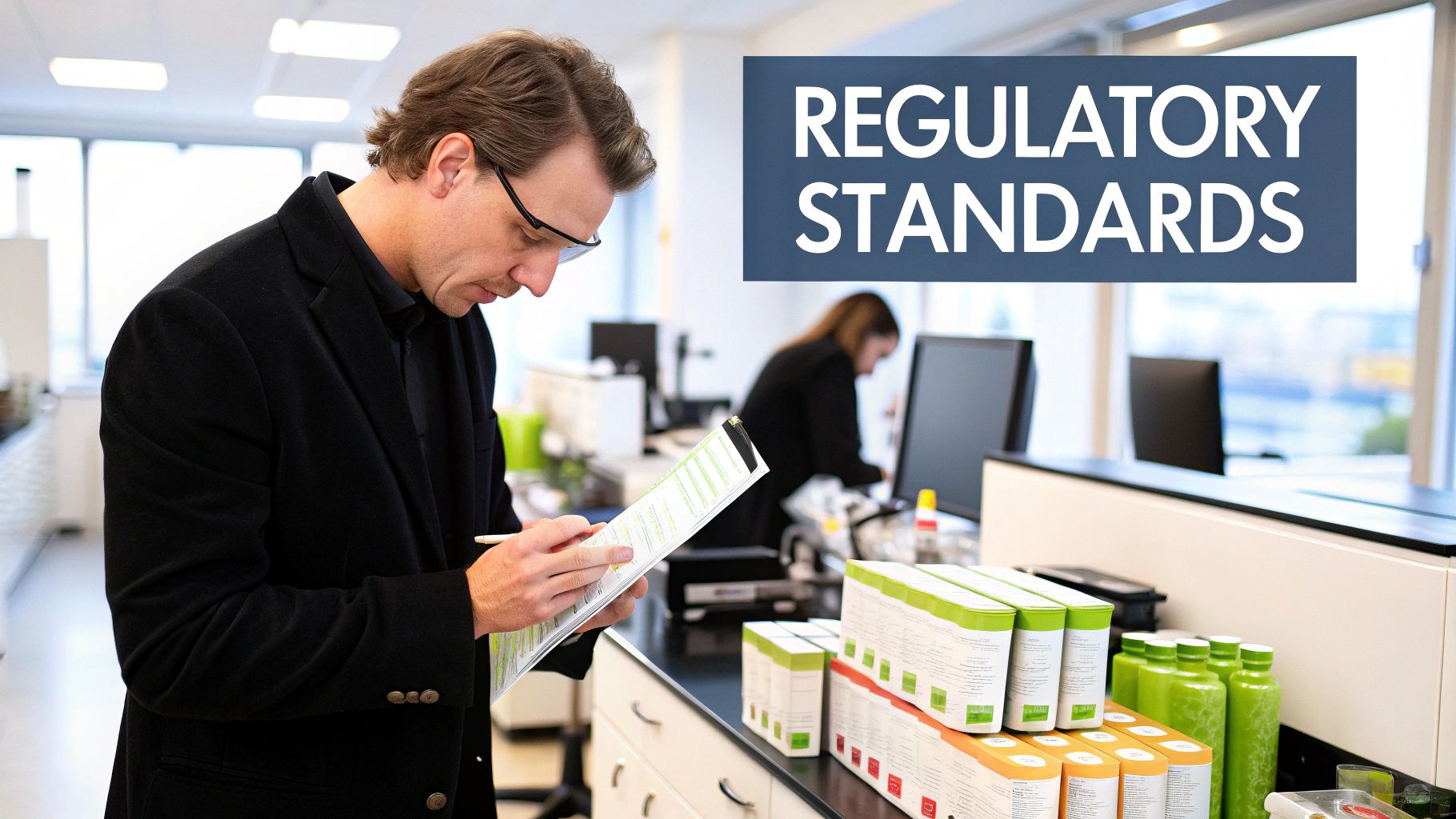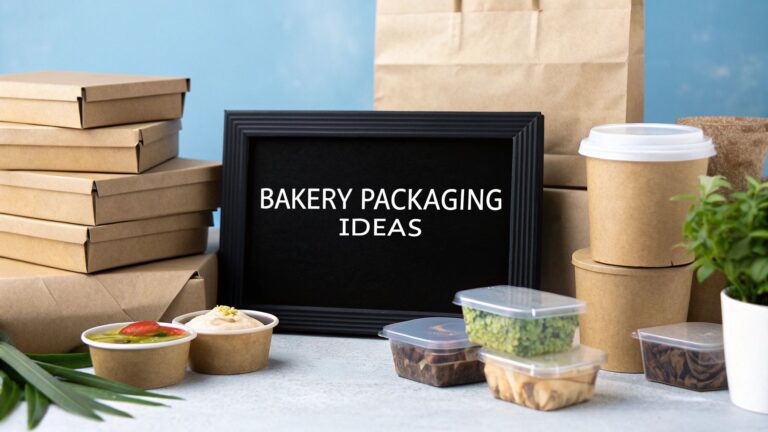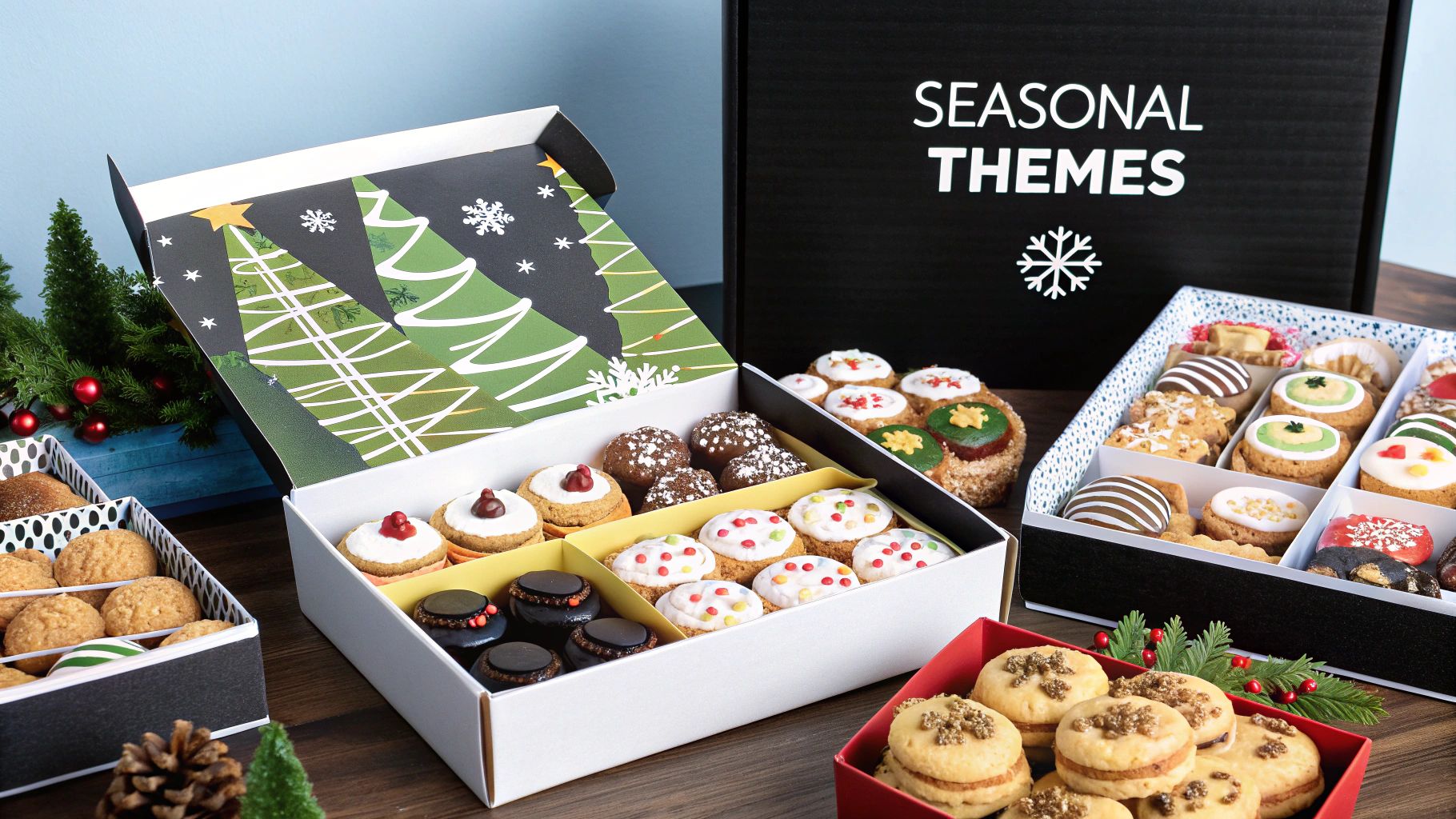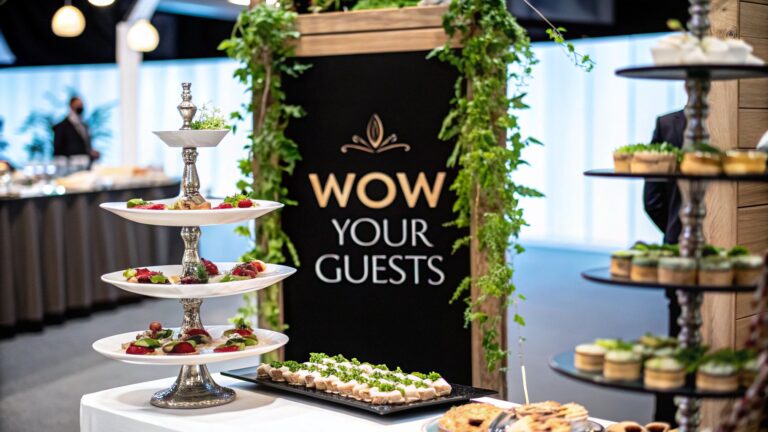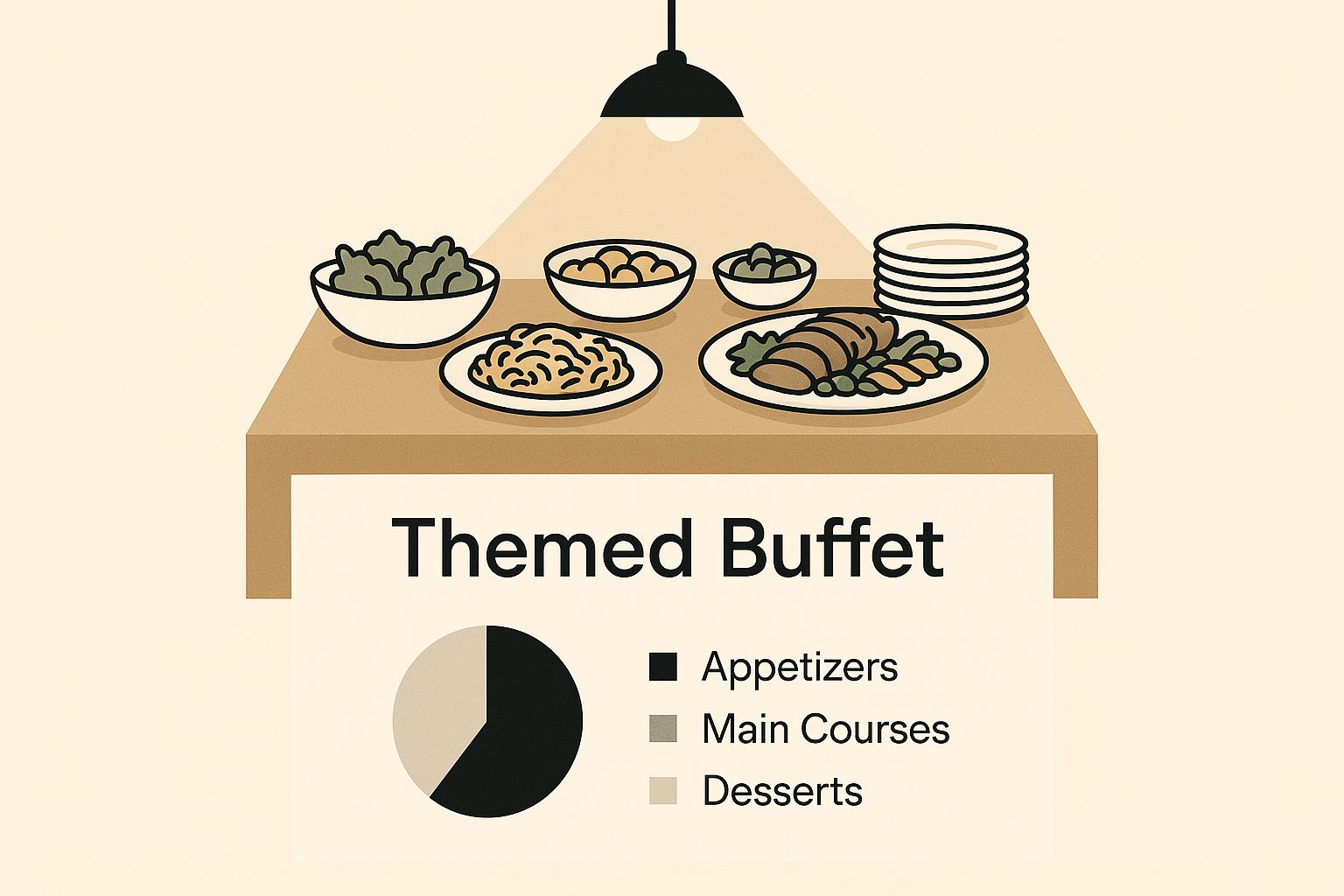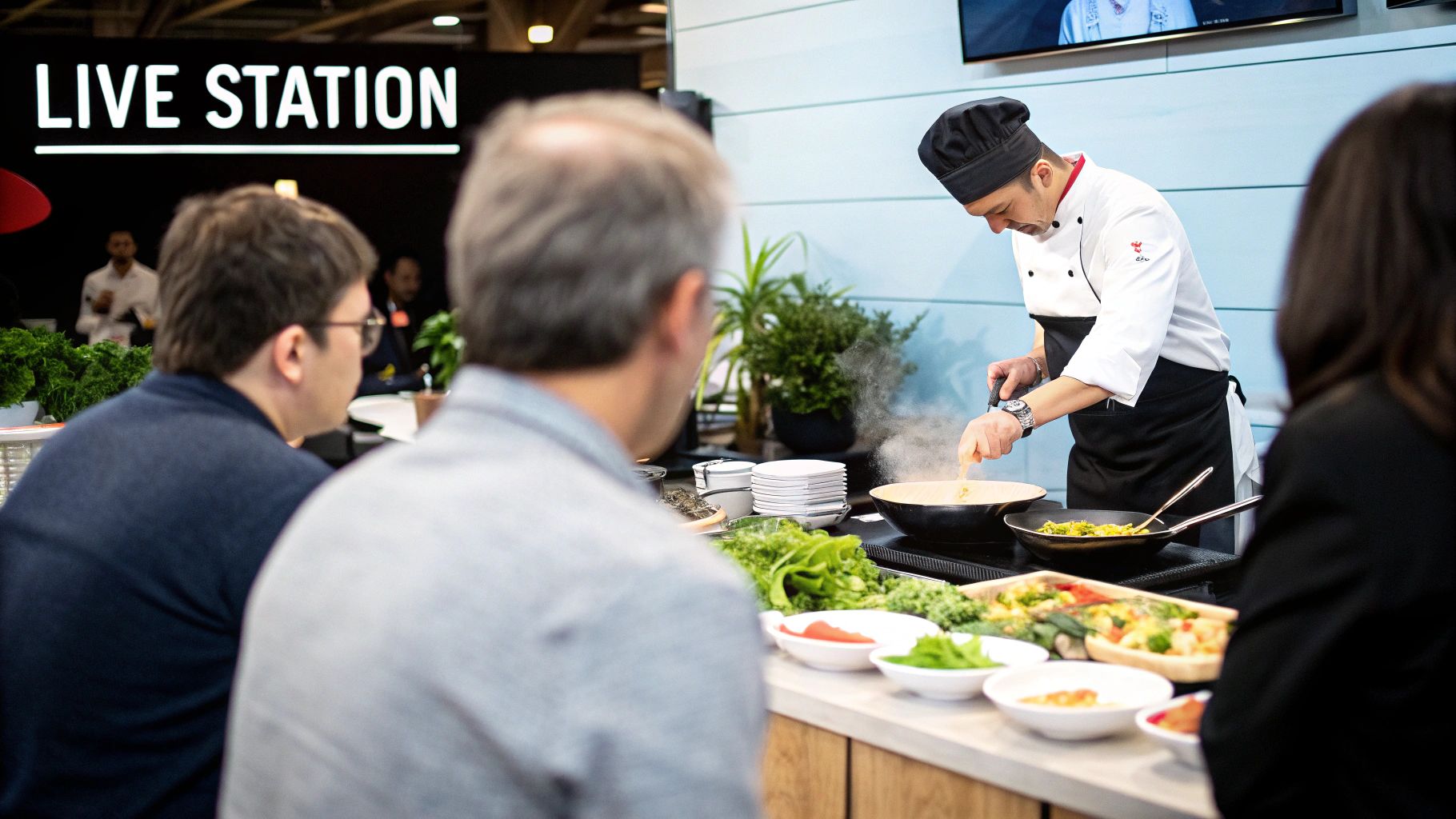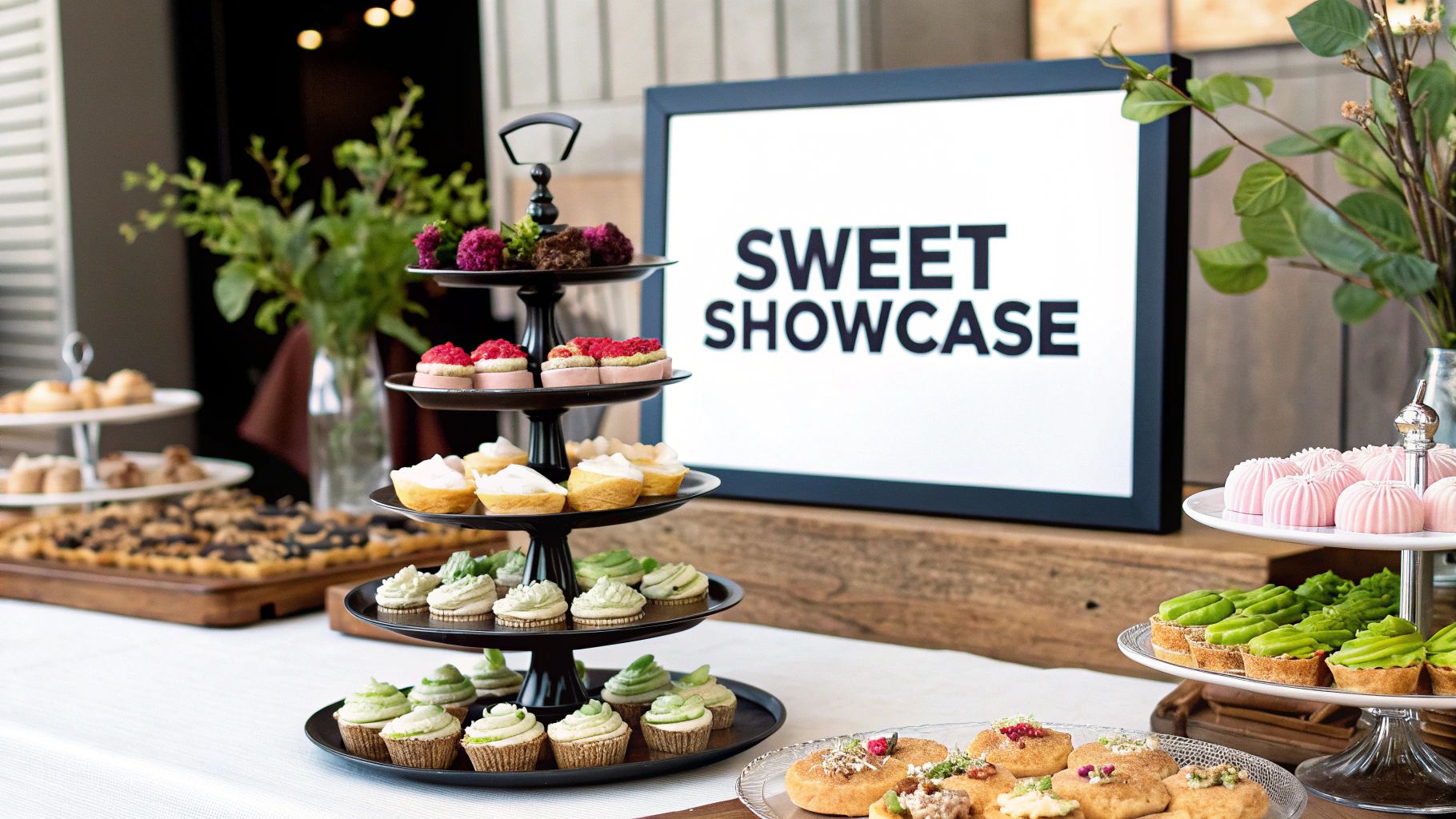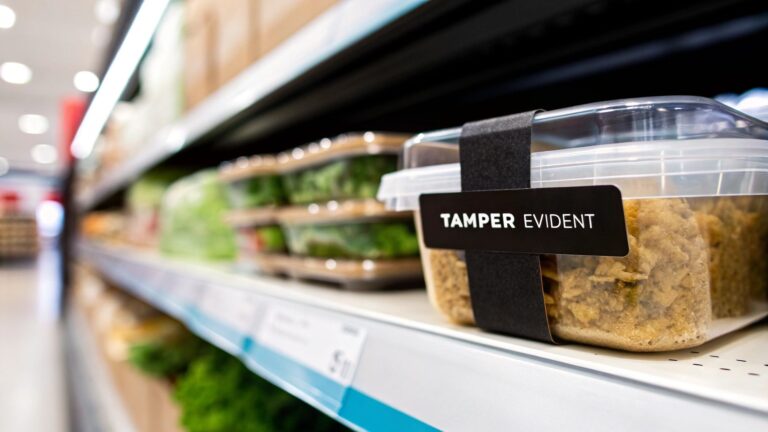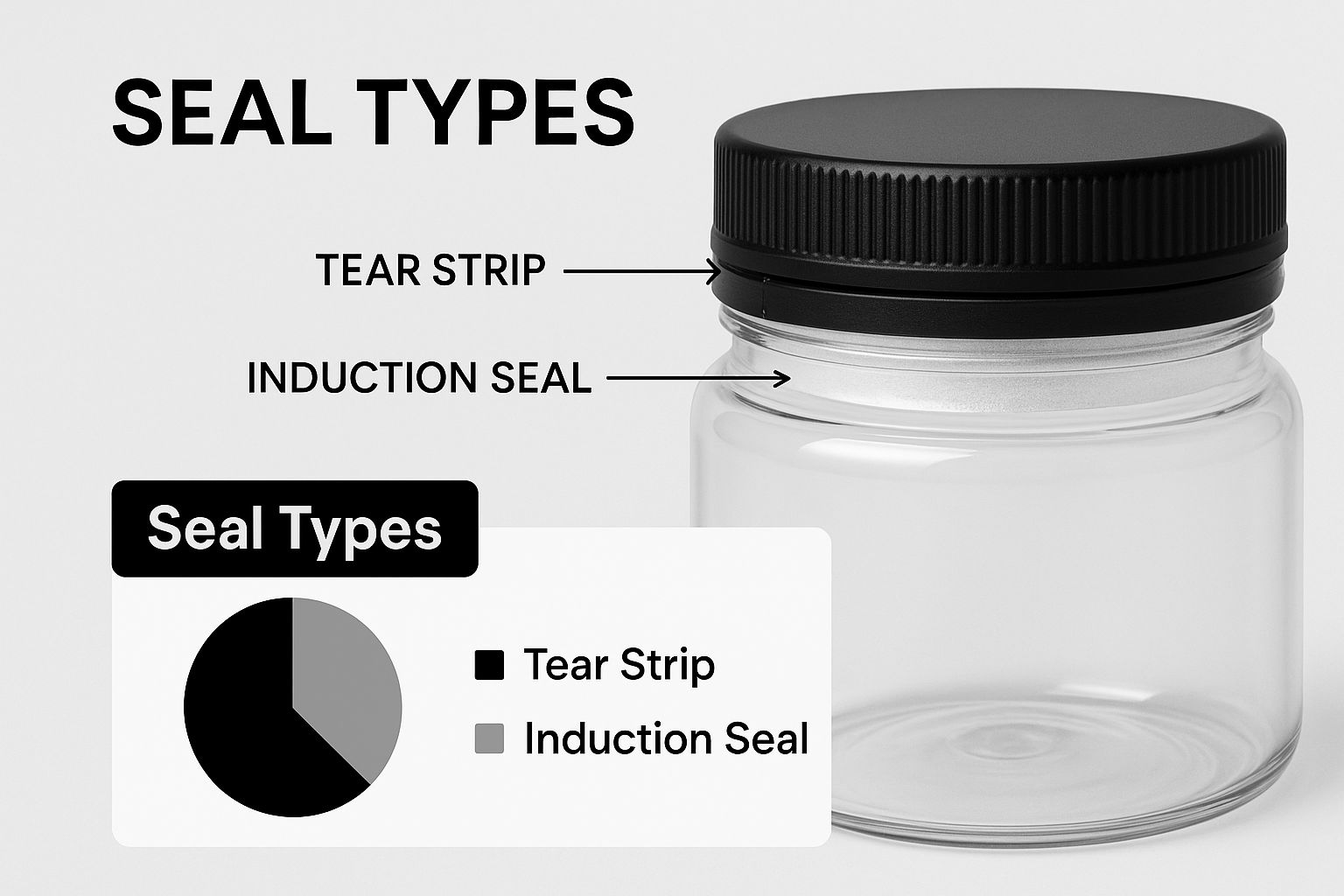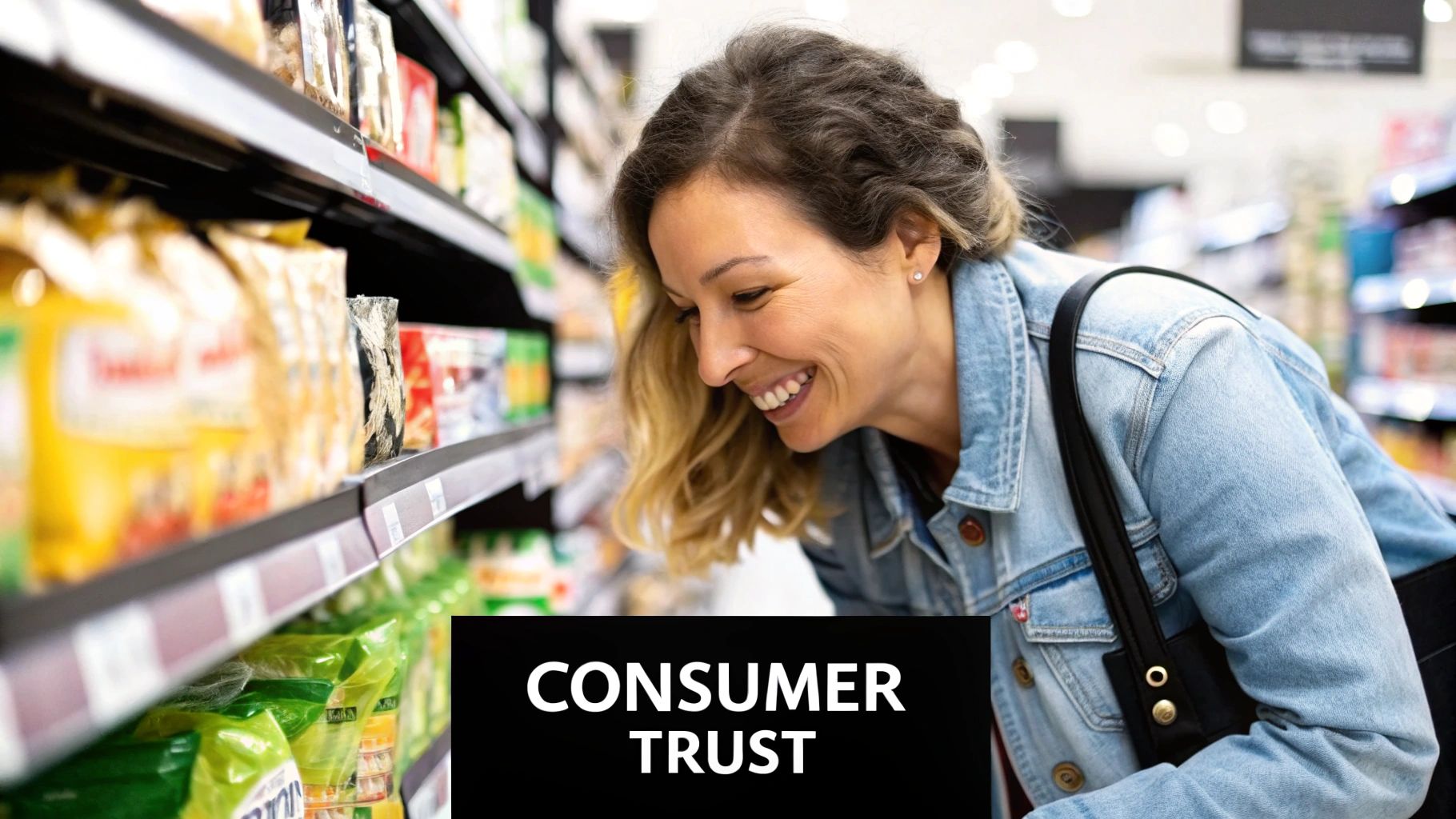Understanding The Exploding Market For Quality Soup Containers
The food service industry is constantly changing, and customer expectations are evolving right along with it. Simple containers just don’t cut it anymore. Today’s customers want take out containers for soup that not only prevent spills, but also maintain quality and even add to their dining experience. This demand has put soup containers right at the cutting edge of the takeout packaging market.
Our increasing need for convenience drives this rapidly expanding market. People are busier than ever, leading to greater reliance on takeout options. This means businesses must ensure their food travels well and arrives in perfect condition, just as if it were served in their restaurant.
Take out containers for soup are essential for a satisfying meal on the go. This focus on convenience translates to real market growth. The global soup container market is booming, fueled by continuous growth in the ready-to-eat food sector. The soup industry itself reached a global value of about $19.48 billion in 2024. It’s projected to reach $25.96 billion by 2033, growing at a CAGR of 3.24% between 2025 and 2033.
How Container Choice Impacts Customer Loyalty
Selecting the right take out containers for soup goes beyond mere practicality. It has a direct impact on customer loyalty. A leaky container can ruin a customer’s meal, resulting in negative reviews and lost revenue.
On the other hand, a quality container that maintains temperature and prevents spills shows customers you care about their experience. This encourages repeat business and positive word-of-mouth.
The Hidden Costs Of Poor Container Decisions
While basic containers may seem cheaper upfront, the hidden costs of these choices can add up. Lost customers, negative reviews, and a damaged reputation can be much more costly in the long term. Investing in quality containers isn’t just an expense; it’s an investment in customer satisfaction and the growth of your business. Even a single negative review due to a spilled soup can turn away potential customers.
What Successful Establishments Are Doing Differently
Successful food businesses understand the vital role of quality take out containers for soup in building their brand. They focus on containers that elevate the customer experience, knowing that a satisfied customer is a returning customer.
They also choose containers that reflect their brand image, further strengthening customer loyalty. These businesses view containers as an extension of their dine-in experience, recognizing the importance of maintaining quality from their kitchen to the customer’s hands.
Must-Have Features That Separate Premium From Basic Containers
When it comes to takeout soup, the container you choose makes all the difference. Customers notice the quality immediately, distinguishing between a premium experience and a basic one. Investing in the right container shows you care about the quality of your food and, ultimately, your customers’ satisfaction. It’s an investment in your business’s success.
Leak-Proof Seals: The Foundation of a Spill-Free Experience
A secure, leak-proof seal is essential for soup containers. Nobody wants a soggy bag or a soup-stained car seat. Look for containers with robust lids and strong sealing mechanisms. Snap-on lids or those with an integrated gasket are excellent options. These features keep the soup contained, protecting both the meal and your business’s reputation.
A tight seal also helps maintain the soup’s temperature. This, combined with the spill protection, ensures a positive customer experience, especially during delivery.
Temperature Control: Keeping Soup Piping Hot or Refreshingly Cold
Maintaining the right temperature is key, whether your soup is piping hot or refreshingly cold. Insulated containers, or those made with temperature-retaining materials, help achieve this. These containers keep soup at the ideal temperature for longer periods, a crucial factor for deliveries. The result? A happy customer receiving their soup at just the right temperature.
The growing demand for takeout soup highlights the importance of product safety, temperature maintenance, and leak-proof performance. The rise of health-conscious consumers also emphasizes the need for cleaner materials like biodegradable plastics and recyclable paperboard.
Durability and Stackability: Essential for Transport and Storage
Durability is key, especially during transport and storage. Choose containers made from sturdy materials that can handle stacking without cracking or damage. Reinforced bottoms and sides help protect the soup during delivery, minimizing spills and messes.
Efficient stackability is also crucial for optimizing storage space and streamlining deliveries. This efficiency translates to a smoother process for both your business and your delivery drivers.
Ventilation Options: Preventing Soggy Bread and Condensation
Proper ventilation prevents condensation, keeping those breadsticks or croutons crispy. Some containers offer small vents to release steam without sacrificing temperature. This detail makes all the difference when serving soup with sides, preserving texture and enhancing the dining experience. However, for soups meant to be eaten immediately, a ventless container may be preferred to maximize heat retention.
Microwave and Freezer Safe: Adding Convenience for Customers
Microwave-safe and freezer-safe containers offer ultimate convenience. Customers can easily reheat or store leftovers without transferring the soup. This extra functionality shows you care about their needs, improving their overall experience and encouraging repeat business.
Material Showdown: What Actually Works For Different Soup Types
Choosing the right takeout containers for your soup is a crucial decision that goes beyond simply grabbing the first option available. The container material significantly impacts soup quality, customer satisfaction, and even your business’s profitability. Different soups have unique needs, and understanding these nuances is essential for successful takeout service.
Matching Materials to Soup Characteristics
The type of soup you serve plays a large role in determining the best container. A light broth, for instance, has different requirements than a thick, hearty stew. Understanding the properties of each material is key to making the right choice. Let’s explore the advantages and disadvantages of common takeout container materials.
- Plastic: Plastic containers are a popular option due to their affordability and availability in various sizes. They generally offer good leak protection, but heat retention can be a concern. Some plastics might absorb flavors or stains, especially from oily or richly colored soups. When selecting plastic containers, be sure to research material properties.
- Paperboard: Paperboard containers, typically lined with plastic or wax, are a more environmentally friendly choice. They work well for lighter soups and shorter delivery times. However, they may not be suitable for extremely hot or oily soups due to the risk of leaks or container breakdown. Businesses prioritizing sustainability should consider researching eco-friendly takeout containers.
- Foam: Foam containers excel at insulation, effectively maintaining soup temperature. However, their negative environmental impact has made them less popular, and they are increasingly subject to regulations and bans.
- Biodegradable Options: Biodegradable containers offer a sustainable alternative to traditional options and are gaining popularity among environmentally conscious consumers. The infographic below illustrates the benefits of biodegradable soup containers.
This shift towards eco-conscious packaging reflects a growing trend within the food service industry.
To help you better understand the various material options, we’ve compiled a table summarizing their performance across key metrics.
Soup Container Material Performance Analysis
| Material Type | Heat Retention (Hours) | Leak Prevention Rating | Environmental Score | Cost Per Unit | Best Application |
|---|---|---|---|---|---|
| Plastic | 1-2 | High | Moderate | Low | Everyday soups, short deliveries |
| Paperboard | 0.5-1 | Moderate | High | Low-Medium | Lighter soups, short deliveries |
| Foam | 2-3 | High | Low | Low | Hot soups, long deliveries (where permitted) |
| Biodegradable | 1-1.5 | Moderate-High | Very High | Medium-High | Eco-conscious brands, various soup types |
As you can see, each material has its strengths and weaknesses. Plastic offers a good balance of cost and performance, while paperboard excels in environmental impact. Foam provides superior insulation, but its environmental concerns are significant. Biodegradable options are the most sustainable but may come at a higher cost.
Hidden Costs and Sustainability Concerns
While some materials may seem cheaper initially, it’s crucial to consider long-term costs. For example, foam containers might have a low upfront cost, but their environmental impact and potential for future bans could lead to higher expenses in the long run. Finding a sustainable solution that also fits your budget is essential for long-term success.
Transitioning Between Materials: A Smooth Approach
Changing to a new container material doesn’t have to be disruptive. A gradual implementation combined with clear communication with your customers can ensure a smooth transition. Consider testing new materials with a small customer group before making a full-scale change to gain feedback on container performance. This iterative approach minimizes risk and ensures that your new takeout containers meet your customers’ expectations.
Regional Trends Shaping The Future Of Soup Packaging
Understanding the future of soup packaging is crucial for smart container choices. Different regions are innovating in unique ways, shaped by consumer preferences, cultural norms, and environmental rules. What thrives in one market might not work in another.
North America: Efficiency and Convenience
North America, especially the United States, prioritizes efficiency and convenience. This drives demand for takeout soup containers that are easy to use, transport, and store. Leak-proof designs and effective temperature control are key, ensuring soup arrives perfectly. Microwave and freezer-safe materials also cater to busy lifestyles.
Europe: Sustainability Takes Center Stage
Europe leads the way in sustainable packaging. Eco-conscious consumers demand biodegradable and compostable takeout soup containers. This focus on reducing plastic waste fuels innovation in materials and design. Legislation promoting reusable packaging is also growing, shaping the future of soup containers in Europe.
Asia Pacific: A Blend of Tradition and Innovation
The Asia Pacific region blends traditional food culture and modern trends. While convenience matters, culture often influences container design. Some cultures prefer reusable containers, while others prioritize single-use for hygiene. This market needs adaptable solutions that meet specific cultural needs.
Global Trends: Eco-Consciousness and Premiumization
Globally, eco-conscious packaging is growing in importance. Consumers are more aware of the environmental impact, pushing businesses towards sustainable practices. When choosing materials for soup containers, understanding properties, like the strength and durability of polyethylene tanks, is crucial. At the same time, premium packaging is rising in demand, enhancing the dining experience. Consumers will pay more for high-quality containers that preserve flavor, maintain temperature, and reflect the soup’s quality.
Geographically, North America—particularly the United States—and Asia Pacific are dominant markets thanks to large consumer bases and developed food service sectors. Europe is also significant due to its high demand for premium and sustainable packaging. The global focus on reducing plastic waste encourages manufacturers to develop eco-conscious container materials.
These regional and global trends provide valuable insights. By understanding them, businesses can choose the right takeout soup containers, meet customer expectations, and contribute to a sustainable future.
Right-Sizing Your Container Strategy For Maximum Profitability
Getting your takeout soup containers right is about more than just holding liquid. It directly affects your profits. Choosing the wrong size can lead to wasted soup, higher shipping costs, and unhappy customers. This section explores optimizing your container strategy for maximum profitability.
The Psychology of Portion Size
The size and shape of your takeout soup containers can surprisingly influence customer perception. A smaller container filled to the top can create a feeling of abundance. A larger, half-empty container might leave customers feeling cheated, even if the actual amount of soup is identical. This portion perception is key to customer satisfaction.
For example, a 12-oz soup might seem more generous in a 10-oz container compared to a 16-oz container. This doesn’t mean misleading customers with inaccurate portions. Instead, strategically choosing container sizes can improve the perceived value.
Matching Container Size to Customer Base and Offerings
Different customer bases have different needs. A single lunch serving differs from a family-sized dinner portion. Analyze your sales data to understand your customers’ typical order sizes. This data informs your container choices, ensuring the right sizes are available for your target market.
Also, consider the type of soup. A thick stew might need a wider, shallower container for easier serving. A clear broth-based soup might look better in a taller, narrower container. Experimenting with different shapes and sizes helps you find what works best for your menu.
Testing and Inventory Optimization
Introducing new container sizes requires careful planning. Avoid confusing current customers by suddenly switching sizes. Instead, test new sizes with a small customer group or for limited-time promotions. This gathers feedback and assesses the impact on profits before a full switch.
Efficient inventory management is also essential. Too many of the wrong-sized containers tie up money and increase storage costs. Running out of the correct containers leads to lost sales and upset customers. Inventory optimization strategies, like forecasting demand based on past sales and seasonal trends, ensure you have the right containers available.
Strategic Sizing: A Data-Driven Approach
The following table shows how different container sizes can be strategically matched to customer groups and business scenarios. It illustrates how container sizing can affect profit margins.
| Container Size | Optimal Volume (oz) | Target Customer | Profit Margin Impact | Best Use Scenario |
|---|---|---|---|---|
| Small | 8 | Individual lunch orders | Higher margin due to lower material cost | Quick lunch service |
| Medium | 12 | Individual dinner orders, small sharing portions | Balanced margin | Versatile option |
| Large | 16 | Family meals, large sharing portions | Potentially lower margin due to higher material cost, but increased order value | Catering, family dinners |
By aligning your container strategy with customer needs and order patterns, you can optimize portions, minimize waste, and boost profitability. The right container is more than just a holder for your soup—it’s a strategic tool for business success.
Smart Sourcing Strategies That Protect Your Bottom Line
Sourcing takeout soup containers involves more than just comparing prices. Overlooking key factors can significantly impact your bottom line and customer satisfaction. A strategic sourcing approach considers the total cost of ownership, encompassing factors beyond the initial price tag.
Beyond Unit Price: A Holistic View of Cost
Focusing solely on the lowest unit price can be a costly mistake. Hidden costs, like unreliable deliveries, inconsistent quality, or customer complaints due to leaky containers, can quickly negate any initial savings. Imagine ordering cheaper containers that frequently leak. The cost of replacing damaged orders, coupled with the negative impact on customer loyalty, far outweighs any perceived initial price benefits.
Evaluating Suppliers: Key Criteria
A reliable supplier is essential for smooth operations. Evaluate potential suppliers based on these important criteria:
- Consistency and Reliability: Do they consistently deliver on time and maintain consistent product quality? Inconsistent quality can lead to customer dissatisfaction and create operational headaches.
- Customer Service Responsiveness: How do they handle issues and complaints? Responsive customer service is critical for addressing problems quickly and efficiently.
- Hidden Costs: Are there added charges for shipping, handling, or minimum order quantities? Factor these into your total cost analysis.
- Flexibility and Customization: Can they accommodate your specific needs, such as custom printing or varying order sizes? This flexibility can be crucial as your business expands.
Negotiation Strategies That Work
Don’t hesitate to negotiate with suppliers. Building a strong relationship can often lead to better pricing and improved service.
- Leverage Volume: Larger order volumes can provide you with greater negotiating power.
- Long-Term Contracts: Consider negotiating a long-term contract with a reliable supplier to lock in favorable pricing and ensure consistent product quality.
- Bundling Services: Combining multiple packaging needs, like bags, containers, and utensils, can often lead to discounted pricing.
Red Flags and Relationship Management
Be wary of suppliers who exhibit these red flags:
- Consistently Miss Deadlines: This unreliability can disrupt your business operations.
- Offer Unrealistic Pricing: Exceptionally low prices may indicate subpar quality or hidden fees.
- Lack of Communication: Poor communication can lead to misunderstandings and delays, impacting your workflow.
Building strong supplier relationships is vital. Open communication, regular feedback, and a collaborative approach can help address challenges and maintain a mutually beneficial partnership. View your suppliers as partners in your success, not just vendors.
Transforming your profitability involves making strategic sourcing decisions. Evaluating suppliers holistically, negotiating effectively, and proactively managing relationships protects your bottom line and cultivates long-term success. By shifting your focus from unit price to total value, you can build a sustainable and profitable container strategy.
Key Takeaways
Choosing the right takeout containers for soup is crucial for a successful food service business. From happy customers to a healthy bottom line, your container choices impact every aspect of your operations. This section highlights key takeaways to optimize your soup container strategy.
Prioritize Quality and Functionality
Investing in high-quality takeout soup containers is essential. Leak-proof seals are a must-have, preventing spills and keeping customers satisfied. Temperature retention is equally vital, preserving soup quality during delivery or takeout. A satisfied customer is more likely to order again!
Consider features like ventilation options for soups with crispy toppings and microwave/freezer-safe materials for added convenience. These small touches enhance the overall dining experience.
Material Matters: Align With Your Needs
Container material significantly impacts customer experience and your budget. Plastic offers a balance of cost and functionality, while paperboard provides a more sustainable option. Biodegradable materials appeal to environmentally conscious consumers, aligning with growing sustainability trends. Foam, while an excellent insulator, faces increasing environmental regulations. Consider the pros and cons of each material against your specific needs and target audience.
Size Strategically for Maximum Profit
Right-sizing containers is vital for profitability. Portion perception influences customer satisfaction. A smaller, full container often seems more generous than a larger, half-empty one, even if the actual volume is identical. Analyze your customer data and adjust container sizes to their typical order patterns. To control costs and boost profit margins, consider strategies for reducing call center costs. Careful attention to sizing optimizes portions, reduces waste, and maximizes profits.
Source Smartly: Don’t Just Chase the Lowest Price
When sourcing containers, look beyond the initial price tag. Hidden costs, like unreliable deliveries, inconsistent quality, or difficult customizations, can negate any initial savings. Prioritize supplier reliability, responsive customer service, and the ability to meet your unique needs. Strong supplier relationships are key to long-term success.
Regional Trends Inform Smart Decisions
Stay up-to-date on regional trends in the soup container market. North America emphasizes efficiency and convenience, while Europe prioritizes sustainability. The Asia Pacific region blends tradition and innovation, demanding flexible solutions. Understanding these nuances allows you to anticipate market changes and make proactive choices.
Key Action Steps and Benchmarks
- Evaluate Your Current Strategy: Assess your current containers based on these takeaways. Are they leak-proof and temperature-efficient? Are they sized appropriately for your offerings?
- Implement Improvements Incrementally: Avoid overhauling your entire system at once. Test new containers with a small customer group for feedback before making large-scale changes.
- Measure Success Through Metrics: Track customer satisfaction scores, repeat business rates, and waste reduction to gauge the impact of your container choices. Aim for a 10-15% increase in customer satisfaction and a 5-10% reduction in waste within six months of implementation.
By focusing on these key aspects and implementing the recommended actions, you can transform your takeout soup program into a driver of customer satisfaction and business growth.
Ready to elevate your takeout soup game? Explore MrTakeOutBags.com’s wide selection of high-quality, customizable soup containers designed to meet your specific needs. Visit them today and discover the perfect packaging solutions to enhance your brand and delight your customers.

